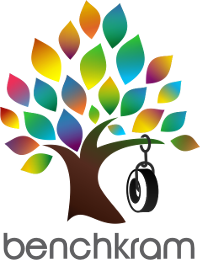Go Api for Electron.
Feel free to fork and make your own changes if needed.
A list of boilerplate projects using gotron.
go1.11 with modules enabled, nodejs and npm must be available on your system.
On the first run it will download Electron and stores it in .gotron in your working directory.
package main
import (
"github.com/Equanox/gotron"
)
func main() {
// Create a new browser window instance
window, err := gotron.New()
if err != nil {
panic(err)
}
// Alter default window size and window title.
window.WindowOptions.Width = 1200
window.WindowOptions.Height = 980
window.WindowOptions.Title = "Gotron"
// Start the browser window.
// This will establish a golang <=> nodejs bridge using websockets,
// to control ElectronBrowserWindow with our window object.
done, err := window.Start()
if err != nil {
panic(err)
}
// Open dev tools must be used after window.Start
// window.OpenDevTools()
// Wait for the application to close
<-done
}When everything worked you should see this
gotron expects a folder containing your HTML/JS/CSS code and passes it to electronJS. make sure it contains at least a index.html as entrypoint.
Pass a path to your webUI on gotrons New(uiFolder ...string) function.
window, err := gotron.New("path/to/your/webui")
if err != nil {
panic(err)
}Frontend to backend communication is realized through javascript like event driven apporach.
Handle incoming events
window.On(&gotron.Event{Event: "event-name"}, func(bin []byte) {
//Handle event here
}Send event to frontend
// Create a custom event struct that has a pointer to gotron.Event
type CustomEvent struct {
*gotron.Event
CustomAttribute string 'json:"AtrNameInFrontend"'
}
window.Send(&CustomEvent{
Event: &gotron.Event{Event: "event-name"},
CustomAttribute: "Hello World!",
})In frontend a websocket needs to be created. Adress is always localhost and port can be taken from global variable global.backendPort
let ws = new WebSocket("ws://localhost:" + global.backendPort + "/web/app/events");Handle incoming events
// This is being called for all incoming messages
ws.onmessage = (message) => {
let obj = JSON.parse(message.data);
// event name
console.log(obj.event);
// event data
console.log(obj.AtrNameInFrontend);
}Send event to backend
ws.send(JSON.stringify({
"event": "event-name",
"AtrNameInFrontend": "Hello World!",
}))To package a go application together with electornjs use gotron-builder.
We provide executables for Linux, MacOS and Windows.
Download the newest release from https://github.com/Equanox/gotron/releases and add it to your $PATH.
It expects...
- a directory containing a golang main package
- and a directory with a webUI containing at least a index.html
By default it will implicitly use...
- golang main package from the current directory
- webUI from .gotron/assets
To pack the code from Quick Start use
gotron-builderin the root of your repo.
Pass your go code and webUI explicitly.
gotron-builder --go=your/go/dir --app=your/webapp/dirFor cross compilation you can use the same flags as electron-builder would expect them
gotron-builder --win
Read about the requirements for cross-compilation in electron-builders documentation.
- Basic js + webpack example
- React example
- Typescript-React example
- Vue.js example
- Elm example
- Flutter Hummingbird example
- Hide nodejs/Electron behind go api
- Create executables for Win, Linux, MacOS
- Hide nodejs/Electron behind go api
- Msgs between golang and Electron renderer process, abstracted in a javascript/typescript package
- Implement complete BrowserWindow api see => BrowserWindow.md
- Implement complete electron-builder api in gotron-builder
MIT
Except Roboto (ui/js/src/Roboto-Light.ttf , ui/react/src/Roboto-Light.ttf) which is licensed under Apache 2.0
https://github.com/google/roboto

